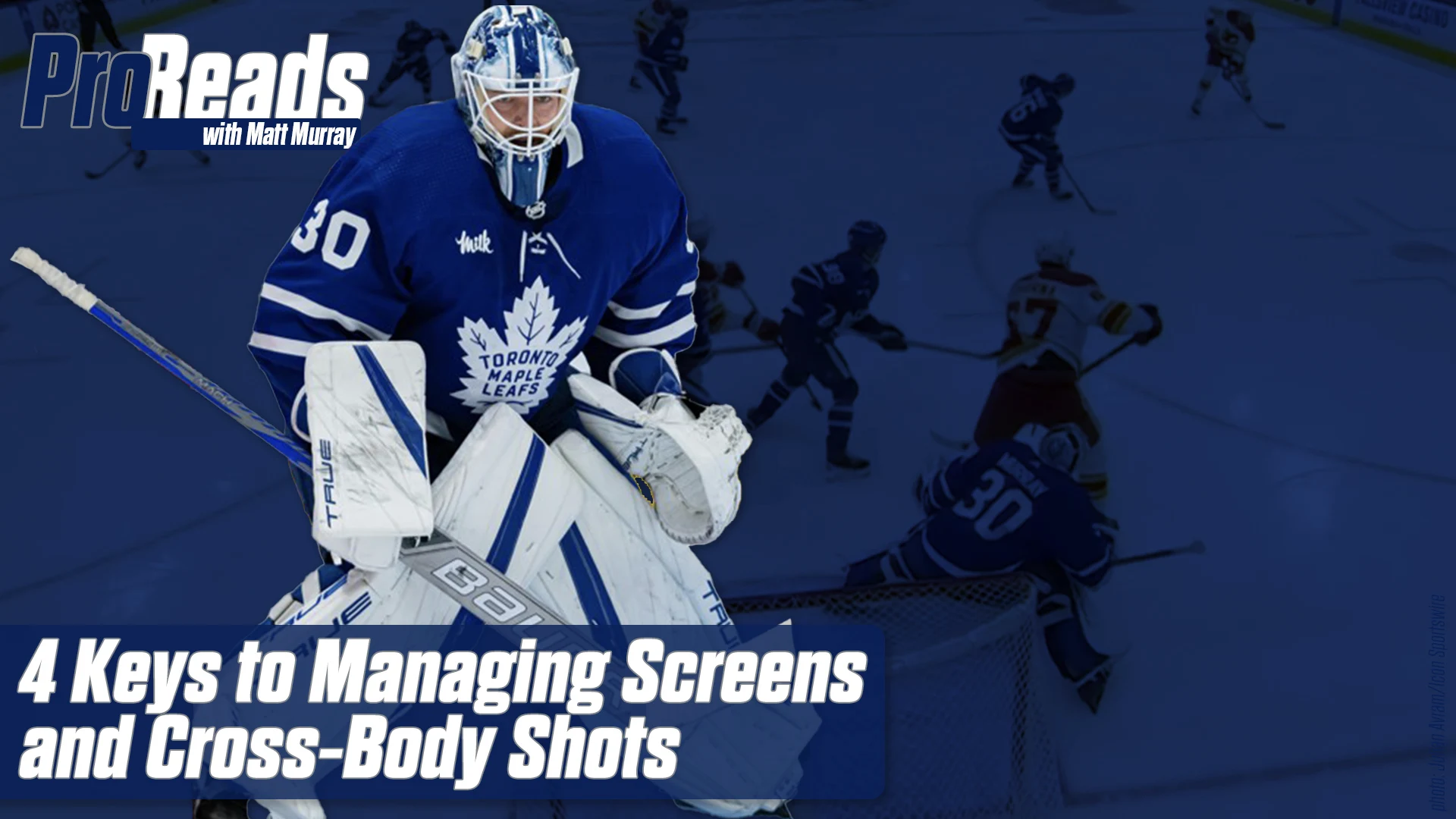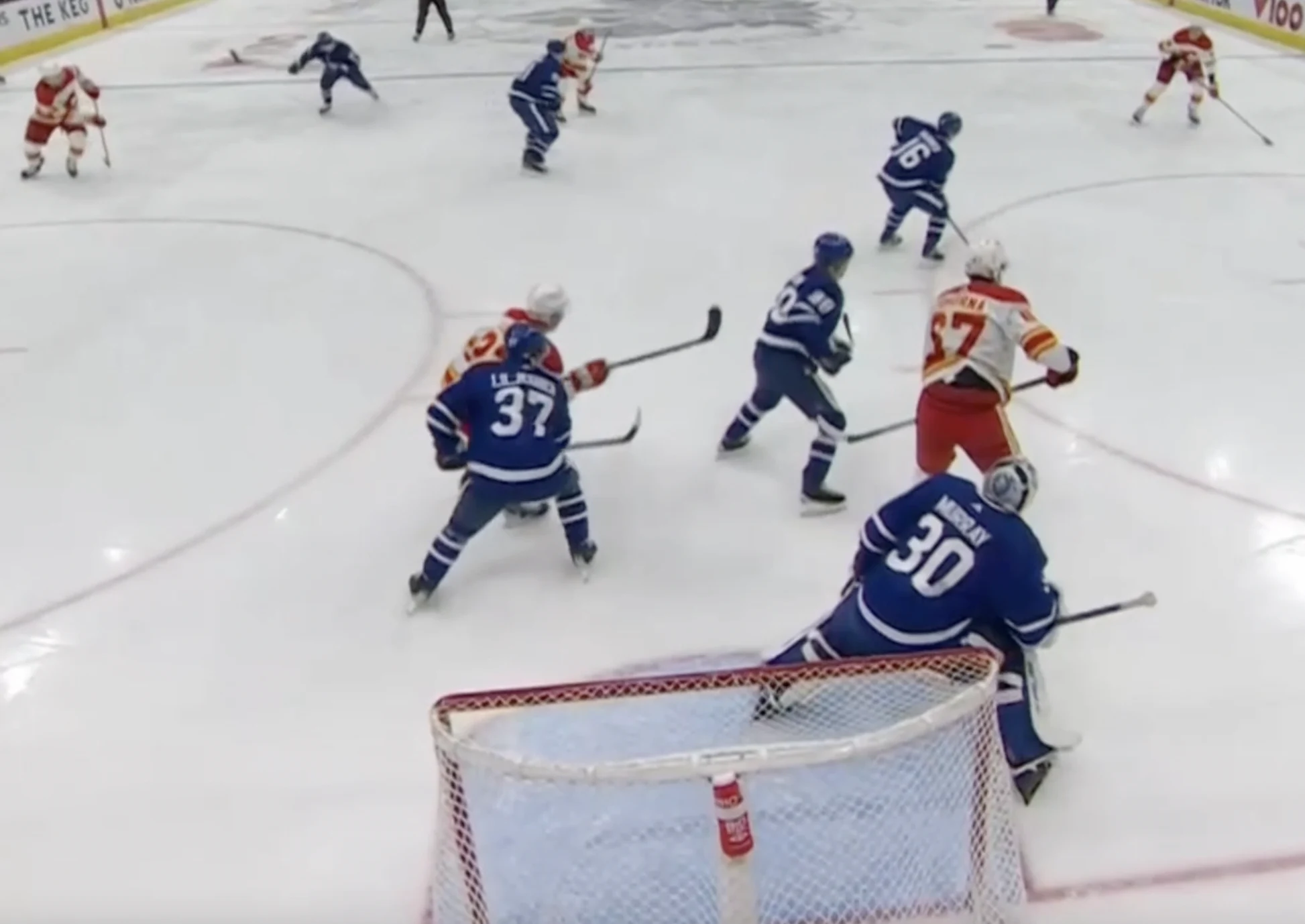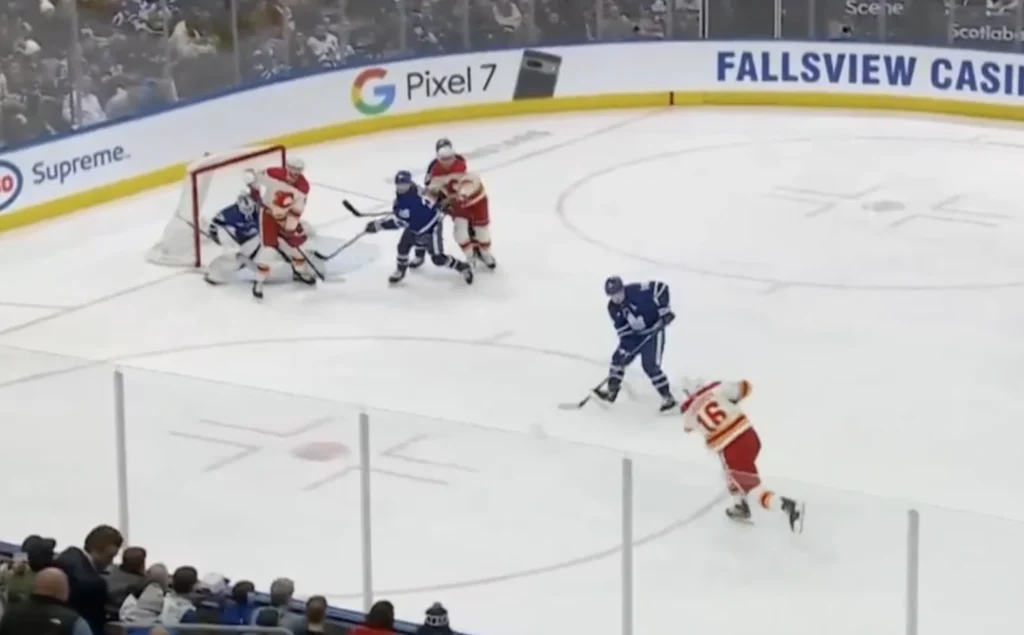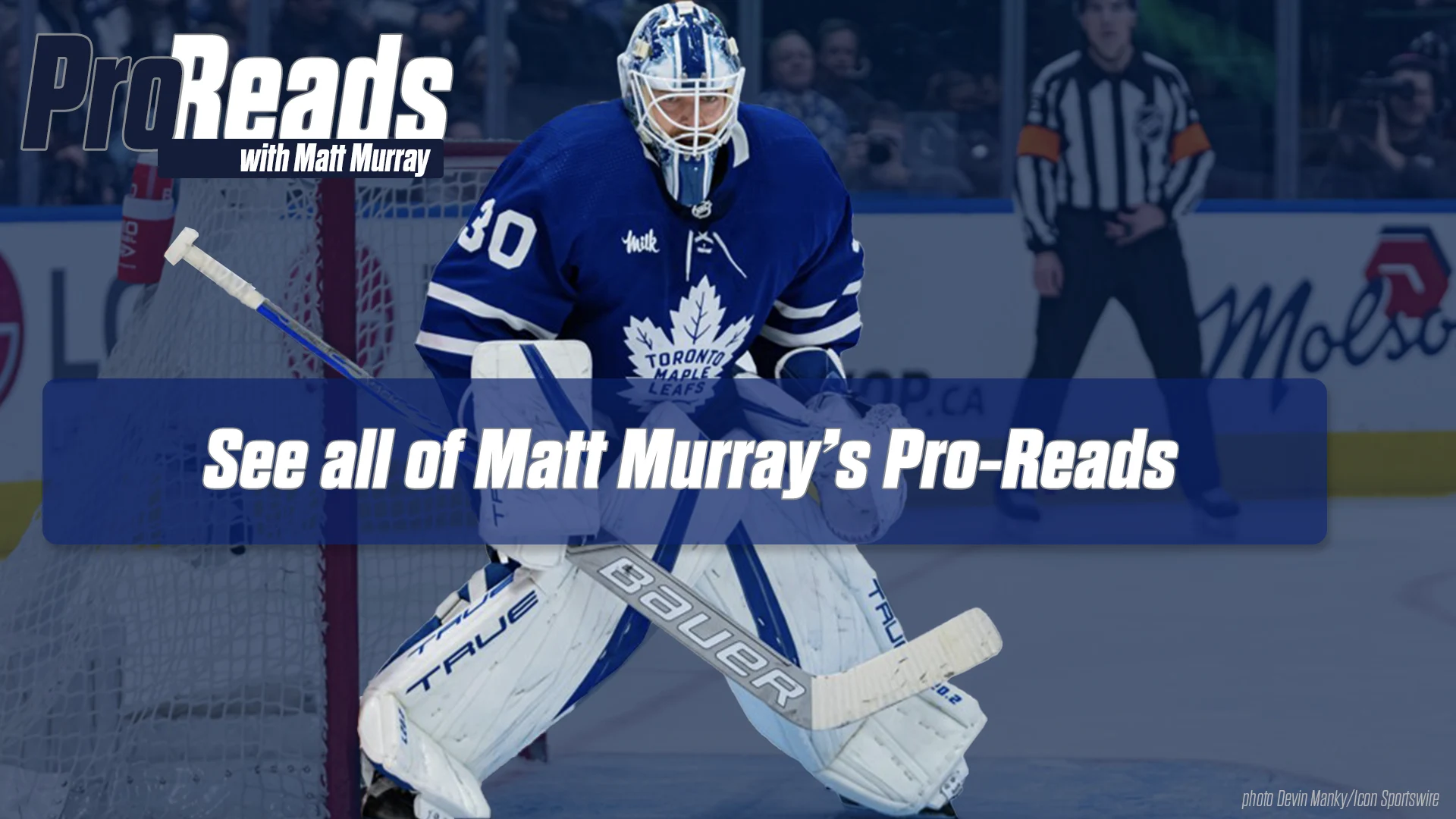
“I see my game as one where my athleticism is not necessarily my strongest suit, so these reads are kind of the equalizer for a guy like me,” Murray said during a recent hour-long film session with InGoal. “I’ve for the size and I’ve got the brain for it — I read the play well — but there are a lot of guys in the League that are a lot more athletic than I am and it’s a good lesson for young goalies that there are other equalizers, you don’t always have to be just the best athlete. Being good with these types of reads and little technical details can really help your game.”
If Murray sounds like another perfect candidate for Pro Reads, you guessed right. His first entry deals with screens, an area he excelled statistically last season, according to Clear Sight Analytics, and beyond reading this play, it’s practically a how-to manual in traffic.
THE SAVE SEQUENCE
Murray is facing a screen chance during 5-on-5 play against the Calgary Flames in his Pro Reads debut, after his Toronto Maple Leafs turned the puck over trying to exit the defensive zone:

The behind-the-net replay gives us a great perspective on what Murray is dealing with as Flames defenseman Nikita Zadorov skates into the top of the face-off circle unchecked in the freeze frame above. At this point, what do you make of Murray’s positioning? What reasons can you see that he would choose to look around the screen on the short side like this?
Maybe make a list and you can compare notes with Murray’s below.
THE SEQUENCE
Before we get to Murray’s detailed breakdown, watch the entire sequence and replay:
THE PRO READ
Let’s hear why Murray approached this screen with that short-side sightline:
Subscribe to the online magazine for goalies, coaches and goalie parents.
Includes unlimited access to our archives of over 800 articles with 1000+ videos, plus a full year of content with the Pros to come. Gift subscriptions available.
Subscribe to the online magazine for goalies, coaches and goalie parents.
Includes unlimited access to our archives of over 800 articles with 1000+ videos, plus a full year of content with the Pros to come. Gift subscriptions available.
Beyond the screen itself, Murray does a nice job walking us through the varying threat options before the puck gets to Zadorov, and how he manages them with his stance and depth. He also does a great job identifying that Zadorov is not a shooting threat early because of how he is carrying the puck, which is why Murray maintains a higher stance at that point.
“You’re more mobile from that high stance,” Murray said.
As for managing the screen and the cross-body push, Murray outlined several keys:
1. Shooter’s Handedness Matters
“The first thing you recognize is the hand of the shooter,” Murray said. “This guy being a left-handed shot your first instinct is you are going to want to hold that side of the screen as long as you possibly can. So whatever handedness the shooter is, ideally, in a perfect world you want to hold that same side because most of the time he is probably going to shoot to that side and if not you are going to have more time from that side if he does go across the body (of the screening forward), you are going to have more time to track the puck. At the end of the day, that’s what you are looking for is the most possible time with your eye on the puck.”
“At a certain point you are going to lose sight of the puck and have to make an educated guess but the longer you can keep your eye on that puck, the more information you can take in before you lose it, before you switch sides, the better opportunity you are going to have to 1. Make a save and 2. Control the rebound. Controlling the rebound is probably the hardest part about screen shots, not just stopping it, but not giving up a grade-A opportunity after. “
While Murray calls this an “educated guess” we would argue it is far more educated than guess! Notice in this frame that the puck has clearly left the shooter’s stick and is on its way to the net and Murray has his head still on the short side.
He has held it on the puck right through the release so that he has all the information he needs to make this save. Watch a younger goaltender on a similar play and they will worry they have no time and start moving early – screening themselves before they have the information they need to make the save.
2. Beware Getting Dragged Too Far By Screener
“Some of the good screeners in the League will try to time that screen so as the shot is being released they almost switch from the weak side to try and take away more of your line of sight. … the easier shot is short side because there’s a lot more stuff in the way in the far side. I’m not saying every time, but there’s more (players) on the far side so the percentages are he’s going to want to shoot it short side and the guy in front more often than not holds on the far side.”
3. Shortest Path to Net is Shortside
Murray explained the far-side shot has to travel a longer distance for puck to get to the net, which is pretty simple geometry, so you get more time to react. “You always want to take the short-side away when you can, and in this case it was the right play to lean and look.”
4. Containing Cross-Body Shot Shift is Key
“A big one would be not to over-shift or over move. You want to be contained. You never want to be moving too much and opening up too many holes … for me being a bigger guy, one thing I try to do is trust my size, move less than you think you need to is a big one for me. If you put too much juice on that push and it does get tipped or a rebound does happen, you are going to have no chance. The more contained and more in control you can be, rather than just pushing 1,000 miles an hour through the shot lane, you are going to give yourself better chance for controlling the rebound and for making a second save if there is a rebound.”
There was a lot of great advice packed into Murray Pro Reads debut, and we can’t wait to continue sharing more of his insights from our hour-long video review session, so stay tuned!
Comments
Let's talk goaltending!
We welcome your contribution to the comments on this and all articles at InGoal. We ask that you keep it positive and appropriate for all - this is a community of goaltenders and we're here for each other! See our comment policy for more information.






but what should you do in this situation if the shooter would have been a right hander? Do you still cover the short side or should you go to the long side?
Great question Sophie. While it can depend on the situation and the team structure, most goaltenders would look to the side of the shooter’s hand. But you have to see the puck above all else!